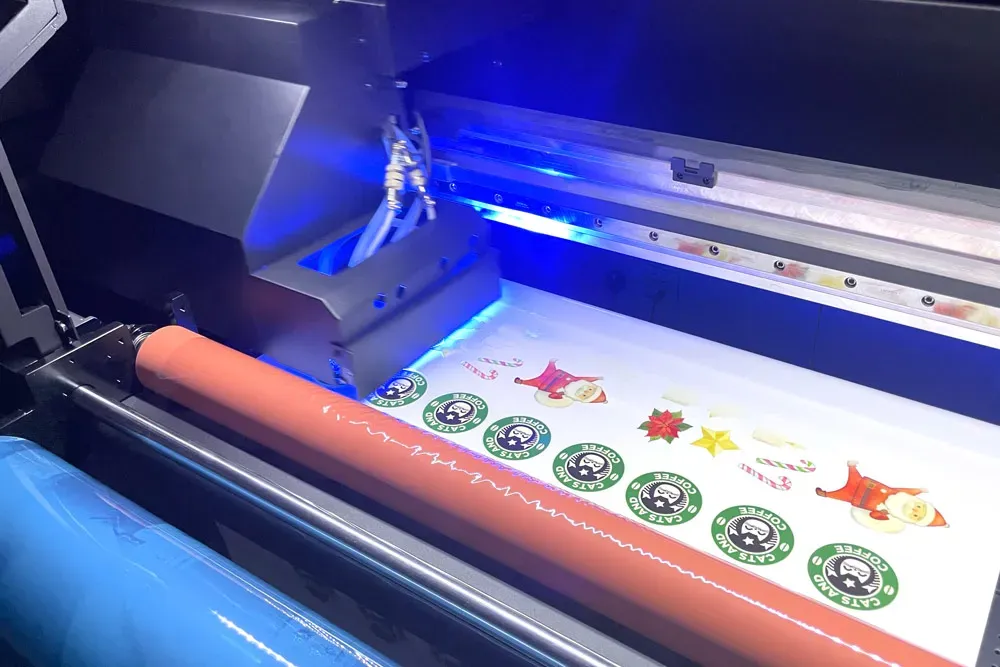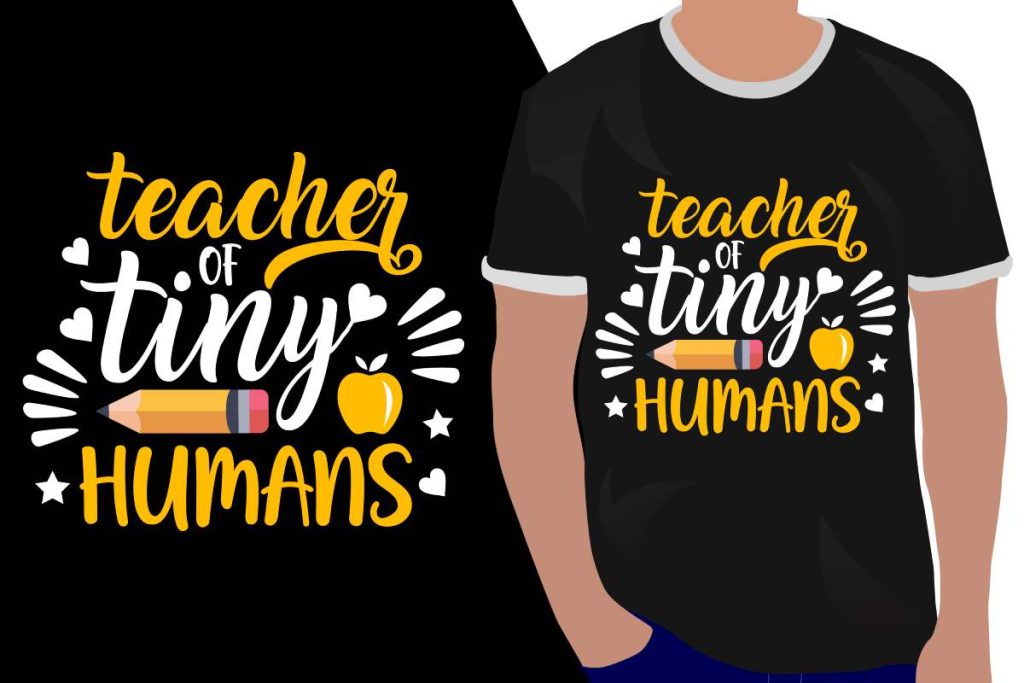UV DTF printing has emerged as a revolutionary technology in the world of printing, seamlessly blending the benefits of ultraviolet curing with direct-to-film applications. This innovative printing method allows for vibrant and durable designs to be transferred onto a variety of substrates, from textiles to plastics and metals. As more entrepreneurs and hobbyists turn to UV DTF printers for their custom printing needs, understanding how to UV DTF print effectively becomes essential. In this beginner’s guide, we will explore the fundamentals of DTF printing technology, including tips and best practices that anyone can grasp, regardless of their experience level. Whether you’re aiming to start a new business or simply want to expand your creative horizons, UV DTF printing offers exciting possibilities for vibrant, high-quality prints.
When it comes to contemporary printing methodologies, UV DTF printing, or ultraviolet direct-to-film printing, has gained significant traction within the industry. This process involves utilizing UV printing techniques alongside DTF technology to create stunning visuals that are both striking and long-lasting. Often referred to as a game-changer, this approach resonates with those looking to dive deep into the world of digital printing and understand the nuances of creating quality prints. In our comprehensive beginner’s guide to DTF printing, we will break down the essentials, covering everything from the equipment needed to the best practices for achieving optimal results. By delving into this dynamic printing landscape, you can unlock new opportunities that cater to diverse design needs.
Understanding UV DTF Printing Technology
UV DTF printing technology stands as a potent combination of UV printing and Direct to Film (DTF) techniques. By using UV light to cure ink instantly, this method enables the production of high-quality prints across a myriad of surface materials, which makes it particularly suitable for various applications such as custom apparel and promotional products. The DTF aspect allows for intricate designs to be printed on special films, which can then be transferred onto substances like textiles and metal, thereby offering exceptional versatility for any printing business.
When delving into how to UV DTF print effectively, it’s vital to have a solid grasp of each component involved in the process. The UV printer, designed with specific features tailored to DTF printing, is at the center of operations. This printer not only provides vibrant color output but also supports unique materials that would typically be challenging to print on using conventional methods. Overall, understanding these components helps harness the full potential of UV DTF printing.
Essential Equipment for Successful UV DTF Printing
To embark on your UV DTF printing journey, you will need a range of essential equipment. Primarily, a quality UV printer able to accommodate DTF printing specifications is fundamental. Brands like Mimaki and Roland are leading the market, providing printers that offer comprehensive features to cater to diverse materials and ink types. Selecting the right printer is crucial, as it directly influences the quality and durability of your prints.
In addition to the UV printer, having the right transfer film is necessary, as it ensures strong adhesive properties during the transfer process. High-quality adhesives designed specifically for UV prints and a reliable heat press machine will help you achieve successful transfers. These components, when combined accurately, will allow you to produce exceptional prints that adhere well and stand out in terms of color and quality.
Design Preparation for UV DTF Printing
Design preparation is a critical step in the UV DTF printing process. The creativity of your designs plays an essential role in the attractiveness of the final product. Utilizing design software such as Adobe Illustrator or CorelDRAW can help you create detailed and vibrant artwork tailored for DTF printing. It’s essential to understand the capabilities of these tools to make the most of your artistic vision.
Additionally, file formatting is of utmost importance. Ensure that your designs are saved in supportive formats, like PNG or TIFF, maintaining high-resolution to retain clarity and vibrancy during the printing process. By prioritizing design quality and appropriate formats, you significantly enhance the outcome of your UV DTF prints and overall production efficiency.
Calibration and Testing in UV DTF Printing
Calibration and testing before commencing full production are vital techniques in UV DTF printing. Conducting test prints allows you to fine-tune necessary settings such as ink density, curing time, and temperature adjustments. This process is invaluable as it helps identify potential issues like ink bleeding or subpar color quality before executing larger runs, ultimately saving time and materials.
After performing test prints, make necessary adjustments based on the results obtained. Fine-tuning your equipment ensures that your prints not only align with quality standards but also meet the expectations of your target market. A well-calibrated printer leads to a smoother operation and reduced wastage, enhancing overall productivity within your printing setup.
Best Practices for Effective UV DTF Printing
In order to achieve the best results in your UV DTF printing endeavors, adhere to specific best practices. First and foremost, utilize high-quality inks specifically manufactured for UV printing; these inks will provide better adherence, vibrancy, and longevity for your prints. The selection of appropriate ink drastically impacts the print’s performance and can define quality standards for your outputs.
Routine maintenance of your printing equipment is another critical aspect. Regular cleaning of the printer heads and heat press not only prolongs the lifespan of your machines but also optimizes performance in each printing job. Consistent check-ups on the equipment and timely upgrades can provide the reliability and precision needed in the ever-competitive printing industry.
Emerging Trends in UV DTF Printing
As we move into 2024, UV DTF printing technology continues to evolve, bringing forth exciting trends that shape the market. One of the prominent trends is the focus on eco-friendliness. Manufacturers increasingly emphasize producing environmentally-friendly inks and materials, responding to a growing demand for sustainable printing practices. This trend not only appeals to environmentally conscious consumers but also places businesses in a favorable position by promoting responsible practices.
Alongside eco-friendliness, there is an increased accessibility to UV DTF printing resources, which can be attributed to the proliferation of online tutorials and community support forums. These platforms provide invaluable information for beginners, equipping them with knowledge on UV printing techniques and operational insights. As businesses gain access to better information and resources, they can innovate their products and services, ultimately enhancing the industry as a whole.
Frequently Asked Questions
What is UV DTF printing and how does it work?
UV DTF printing is a innovative technique that combines UV printing and Direct to Film (DTF) printing technologies. It utilizes ultraviolet light to cure specially formulated inks on transfer films, allowing for vibrant and durable prints on various substrates such as textiles and plastics. This method enables designers to achieve long-lasting designs with rich colors.
What equipment do I need for UV DTF printing?
To start UV DTF printing, you need a UV printer that supports DTF capabilities, high-quality transfer films, specialized adhesives, and a heat press machine. Brands like Mimaki and Roland are recommended for printers, while ensuring your heat press has adjustable temperature and pressure settings will enhance the transfer process.
How can beginners get started with UV DTF printing?
Beginners can embark on UV DTF printing by first understanding the technology, selecting the right equipment, learning design preparation using software like Adobe Illustrator, and conducting thorough calibration and test prints to fine-tune their settings. Following best practices like using high-quality inks and regular maintenance will greatly improve results.
What are the advantages of UV DTF printing compared to traditional methods?
UV DTF printing offers several advantages, including versatility in printing on various materials, durability due to UV curing, and the ability to produce vibrant colors that are resistant to fading. This technology stands out by allowing for quick production times and high-quality finishes, making it ideal for custom designs and promotional items.
What types of substrates can be used with UV DTF printing?
UV DTF printing is versatile and can be applied to a wide range of substrates including textiles, plastics, metals, and even wood. This adaptability enables businesses and hobbyists alike to cater to various markets and create custom products for different audiences.
Are there any trends in UV DTF printing I should be aware of?
Yes, some key trends in UV DTF printing include the rise of eco-friendly inks and substrates, increased accessibility through online resources and community support, and innovations that lower costs for equipment and materials. Staying informed about these trends can help you leverage new opportunities in the market.
| Key Points | Details |
|---|---|
| Introduction to UV DTF Printing | A combination of UV printing and DTF technology for vibrant and durable prints. |
| Advantages of UV DTF Printing | Versatile, durable prints with vibrant colors suitable for various surfaces. |
| Getting Started with UV DTF Printing | Understand the technologies, acquire essential equipment, and prepare designs appropriately. |
| Essential Equipment Needed | UV printer, transfer film, adhesives, and heat press machine. |
| Design Preparation | Use design software with high-resolution exports for best results. |
| Calibration and Testing | Conduct test prints to refine settings such as ink density and curing time. |
| Best Practices | Utilize high-quality inks, perform regular maintenance, and experiment with substrates. |
| Trends in UV DTF Printing | Focus on eco-friendly materials and increased accessibility for newcomers. |
Summary
UV DTF Printing represents a revolutionary step in the printing world, providing versatility and vibrant results across various substrates. This printing method not only combines the strengths of UV curing and DTF techniques but also opens new avenues for creativity and business opportunities. By understanding its technology, investing in quality equipment, and adhering to best practices, beginners can seamlessly integrate UV DTF printing into their projects. As the industry evolves, staying updated with trends and development will ensure success in this exciting field.



